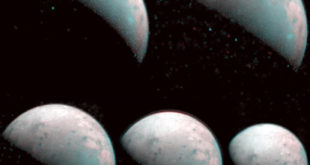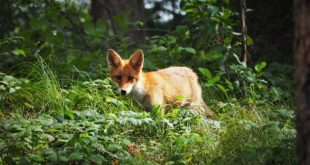101.5-Million-Year-Old Microbes A team of biologists from Japan and the United States has successfully revived aerobic microbes found in 101.5-million-year-old sediments from the abyssal plain of the South Pacific Gyre, the part of the ocean with the lowest productivity and fewest nutrients available to fuel the marine food web. Magnified …
Read More »Chocolate Heart?
Chocolate Helps Keep Heart’s Blood Vessels Healthy, Review Suggests A new systematic review and meta-analysis of previous studies suggests that the consumption of chocolates at least once a week is associated with a reduction in the risk of coronary artery disease. Krittanawong et al found that chocolate consumption (1 time …
Read More »Bioelectronic Devices
Researchers Use Pencil to Draw Bioelectronic Devices on Human Skin Scientists from the University of Missouri, the University of Illinois and Yale University have demonstrated that a combination of pencils and paper could be used to create on-skin bioelectronic devices that might be used to monitor personal health. They’ve fabricated …
Read More »Smallpox Virus in Viking Age
Diverse Strains of Smallpox Virus Were Widespread in Viking Age, New Study Shows Smallpox, caused by the variola virus, is one of the most devastating human diseases. Smallpox killed millions of people but drove Edward Jenner’s invention of vaccination, which eventually led to the annihilation of the virus, declared in …
Read More »North Pole of Ganymede
Juno Sees North Pole of Ganymede in Infrared Light The Jovian Infrared Auroral Mapper (JIRAM) instrument onboard NASA’s Juno spacecraft has captured the first infrared images of the north pole of Ganymede, the largest moon in the Solar System and one of the four Galilean moons of Jupiter. The north …
Read More »Anti-Satellite Weapon
US, UK Accuse Russia of Testing Space-Based Both the US and the UK claim to have evidence that Russia has tested an anti-satellite weapon on July 15. The weapon test has been classified as “non-destructive,” meaning it didn’t target any other satellites. That doesn’t mean it can’t, just that the …
Read More »Active Methane Seep
Scientists Discover Antarctica’s First Active Methane Seep A team of marine ecologists from Oregon State University has described the formation and development of a new methane seep — a location where methane escapes from an underground reservoir and into the ocean — in the Ross Sea, the High Antarctic. The …
Read More »Sun Like Star Imaged
First Multi-Planet System Around a Sun-Like Star Imaged The universe is teeming with exoplanets, but we’ve only been able to detect a small fraction of them. We’ve directly imaged just a handful, but you can add two more to the tally today. The European Southern Observatory has captured a pair …
Read More »Extinct Giant Pigeon
Meet Tongoenas burleyi, Extinct Giant Pigeon from Tonga A new extinct genus and species of pigeon has been identified from fossils found on six islands (Foa, Lifuka, ‘Uiha, Ha‘afeva, Tongatapu, and ‘Eua) in the Kingdom of Tonga. Tongoenas burleyi (right) likely featured the brightly colored plumage of other canopy-dwelling pigeons …
Read More »Foxes 42,000 Years Ago
Foxes Started Eating Human Food Remains as Early as 42,000 Years Ago A team of scientists from the University of Tübingen has studied the diet of Arctic foxes (Vulpes lagopus) and red foxes (Vulpes vulpes) that lived during the Paleolithic period in southwestern Germany. The red fox (Vulpes vulpes). Image …
Read More » #Bizwhiznetwork.com Innovation ΛI |Technology News
#Bizwhiznetwork.com Innovation ΛI |Technology News









